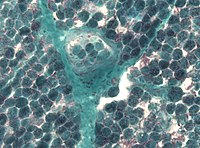Leigh Syndrome

Leigh syndrome is a rare, inherited neurodegenerative condition. It usually becomes apparent in infancy, often after a viral infection. Rarely, it begins in the teenage or adult years. Signs and symptoms usually progress rapidly. Early symptoms may include poor sucking ability; loss of head control and motor skills; loss of appetite; vomiting; and seizures. As the condition progresses, symptoms may include weakness and lack of muscle tone; spasticity; movement disorders; cerebellar ataxia; and peripheral neuropathy. Complications can lead to impairment of respiratory, heart and kidney function. The term "Leigh-like syndrome" is often used for people with features that are strongly suggestive of Leigh syndrome but who do not meet the diagnostic criteria.
The inheritance of Leigh syndrome depends on where the responsible gene is located in each case. This is because it can be due to mutations in either mitochondrial DNA or nuclear DNA:
The inheritance of Leigh syndrome depends on where the responsible gene is located in each case. This is because it can be due to mutations in either mitochondrial DNA or nuclear DNA:
- Mitochondrial DNA-associated Leigh syndrome follows a mitochondrial inheritance pattern (also called maternal inheritance).
- Nuclear gene-encoded Leigh syndrome may be inherited in an autosomal recessive or X-linked manner.